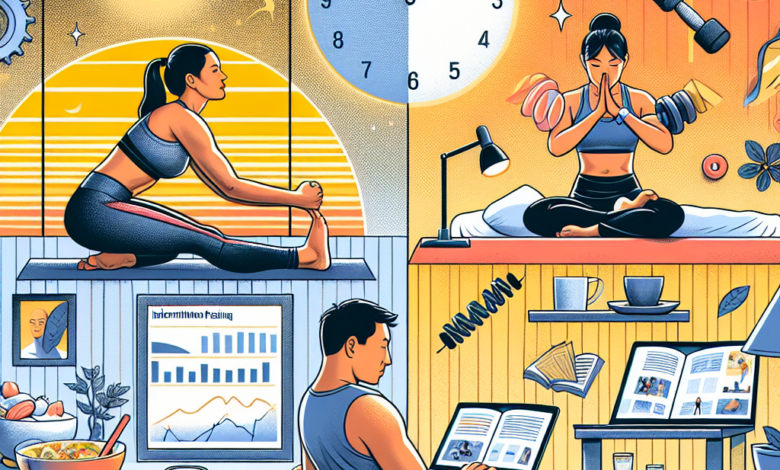Incorporating Exercise with Intermittent Fasting: What You Should Consider

Intermittent fasting (IF) has gained popularity as a dietary approach that alternates between periods of eating and fasting. When combined with exercise, it can enhance weight loss, improve metabolic health, and boost overall well-being. However, to maximize the benefits and minimize potential drawbacks, it’s crucial to consider how these two practices interact. Here’s a comprehensive guide to help you navigate the incorporation of exercise with intermittent fasting.
Understanding Intermittent Fasting
Intermittent fasting is not about what you eat but when you eat. Common methods include:
- 16/8 Method: Fasting for 16 hours and eating during an 8-hour window.
- 5:2 Diet: Eating normally for five days and restricting calorie intake to about 500-600 calories for two non-consecutive days.
- 24-hour Fasts: Skipping meals for one or two days a week.
The goal is to allow your body to enter a state of ketosis, where it burns fat for fuel instead of glucose.
Benefits of Combining Exercise and Intermittent Fasting
1. Enhanced Fat Burning
Exercise during fasting periods may significantly boost fat oxidation. When glycogen stores are low, your body utilizes fat as its primary energy source, leading to efficient weight loss.
2. Improved Insulin Sensitivity
Both exercise and intermittent fasting improve insulin sensitivity, which is crucial for preventing type 2 diabetes. The combination can help regulate blood sugar levels effectively.
3. Increased Growth Hormone Levels
Fasting can increase growth hormone secretion, which plays a role in fat loss and muscle gain. Exercise can further amplify this effect, promoting metabolism and lean muscle mass.
4. Mental Clarity and Focus
Many individuals report heightened mental clarity while fasting. Pairing this cognitive boost with focused workouts can enhance performance, especially in endurance sports or high-intensity interval training.
Factors to Consider
While the benefits are promising, it’s essential to approach the combination of exercise and intermittent fasting mindfully.
1. Timing Is Key
Consider your workout schedule relative to your eating window. Some may benefit from exercising during their fasting hours, while others might find it challenging. Experiment to determine what feels best for your body.
-
Before Break Fast: Exercise before breaking your fast can heighten fat oxidation. Just ensure you’re adequately hydrated.
- After Eating: Working out post-meal may provide more energy and improve performance, but you might miss the fat-burning effects.
2. Type of Exercise
The type of exercise you choose can impact how you feel during fasting.
-
Low-Intensity Exercise: Activities like walking, yoga, or light cycling may be more manageable during fasting periods.
- High-Intensity Workouts: Advanced athletes may thrive on higher intensity but should pay attention to signs of fatigue and dehydration.
3. Listen to Your Body
Everyone responds differently to fasting and exercise. If you feel weak, dizzy, or overly fatigued, it could signal that your body needs more fuel. It’s essential to listen to your body’s cues and make adjustments accordingly.
4. Hydration
Staying hydrated is crucial, especially during fasting. Dehydration can lead to fatigue and decreased exercise performance. Consider electrolyte supplementation if you’re fasting for extended periods or engaging in intense workouts.
5. Nutrient Timing
Post-workout nutrition is vital to replenish depleted energy stores and to support recovery. Focus on a balanced meal with protein, healthy fats, and carbohydrates soon after a workout, especially if you’ve exercised during the fasting period.
6. Monitor Progress
Keeping track of your workouts, energy levels, and body composition can provide valuable insights. Adjust your fasting and exercise routine based on what promotes the best outcomes for you.
Conclusion
Incorporating exercise with intermittent fasting can yield impressive benefits if approached thoughtfully. By considering aspects such as timing, workout intensity, hydration, and nutrition, you can create a balanced routine that enhances both your fitness and health. As always, consult with healthcare professionals or a certified trainer if you have concerns or specific health needs. Embrace the journey of discovering what works best for your body, and enjoy the myriad of benefits that come from combining these two powerful practices.
